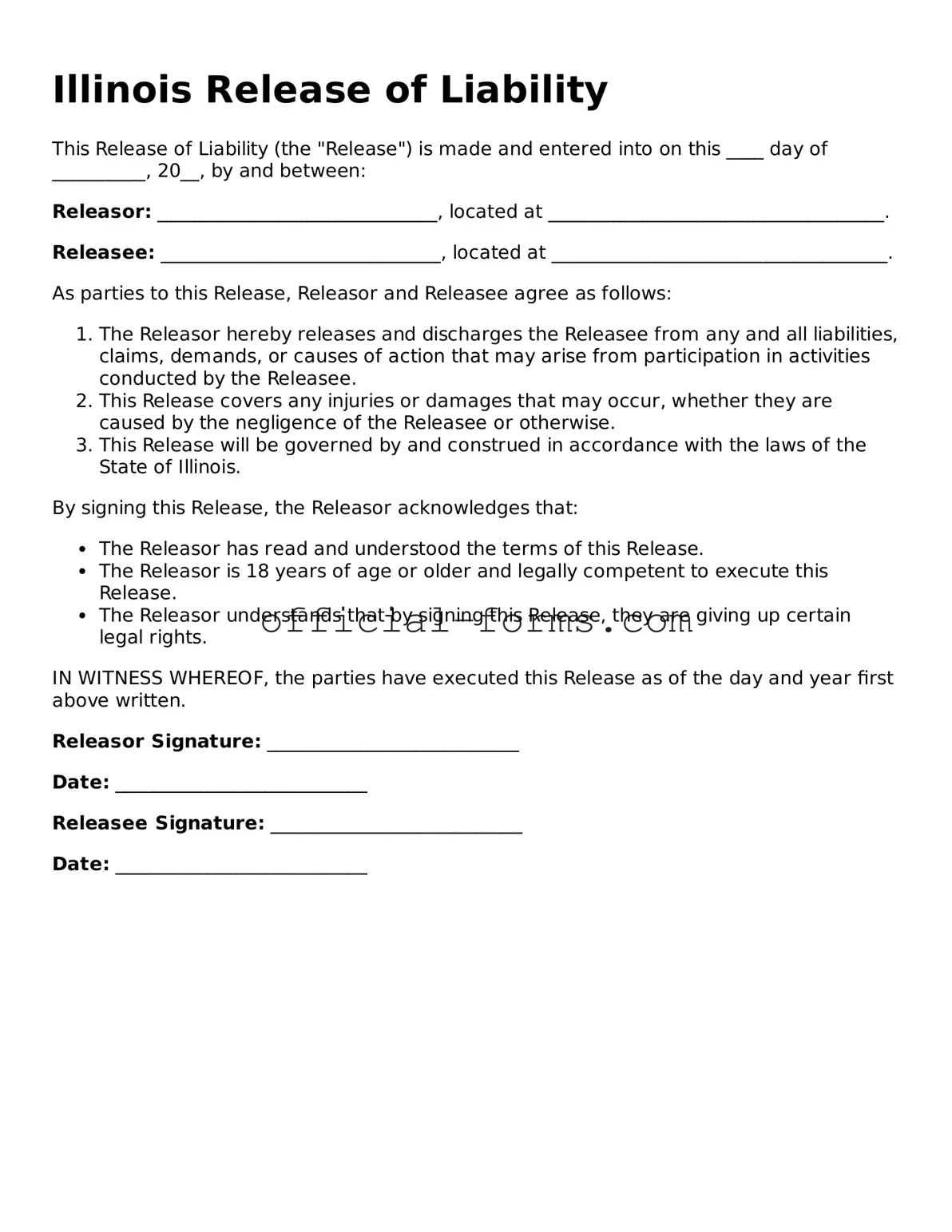Filling out the Illinois Release of Liability form is an important step in protecting oneself from potential legal claims. However, many individuals make mistakes that can undermine the effectiveness of this document. Understanding these common errors can help ensure that the form is completed correctly and serves its intended purpose.
One frequent mistake is failing to read the entire form before signing. Many people skim through the document, missing crucial information about their rights and responsibilities. This oversight can lead to misunderstandings about what is being waived and may result in unintended consequences.
Another common error is neglecting to include all necessary information. The form typically requires specific details, such as names, dates, and descriptions of the activity involved. Omitting any of this information can render the form incomplete and may lead to disputes later on.
People often forget to sign and date the form. A signature indicates consent and understanding of the terms outlined in the document. Without a signature, the release may not be valid, and the individual could still be held liable for any injuries or damages that occur.
Additionally, some individuals may not understand the implications of the release. It is essential to recognize that signing the form means relinquishing certain rights to sue for injuries that may arise from the activity. Without a clear understanding of this, individuals may inadvertently compromise their legal rights.
Another mistake involves failing to consult with a legal professional. While the form may seem straightforward, seeking advice can provide clarity and ensure that all aspects are addressed appropriately. A legal expert can help individuals understand their rights and the potential risks involved.
Finally, people sometimes fail to keep a copy of the completed form for their records. Retaining a copy is vital, as it serves as proof of the agreement and can be referenced in the event of a dispute. Without this documentation, individuals may find it challenging to assert their rights later on.
By being aware of these common mistakes, individuals can take steps to complete the Illinois Release of Liability form accurately and effectively. This diligence not only protects their interests but also fosters a better understanding of the legal implications involved.
